Lagos Spinach is both an ornamental plant and an edible leafy green vegetable. It has beautiful, distinctive flowers and is grown for food markets in tropical climates.
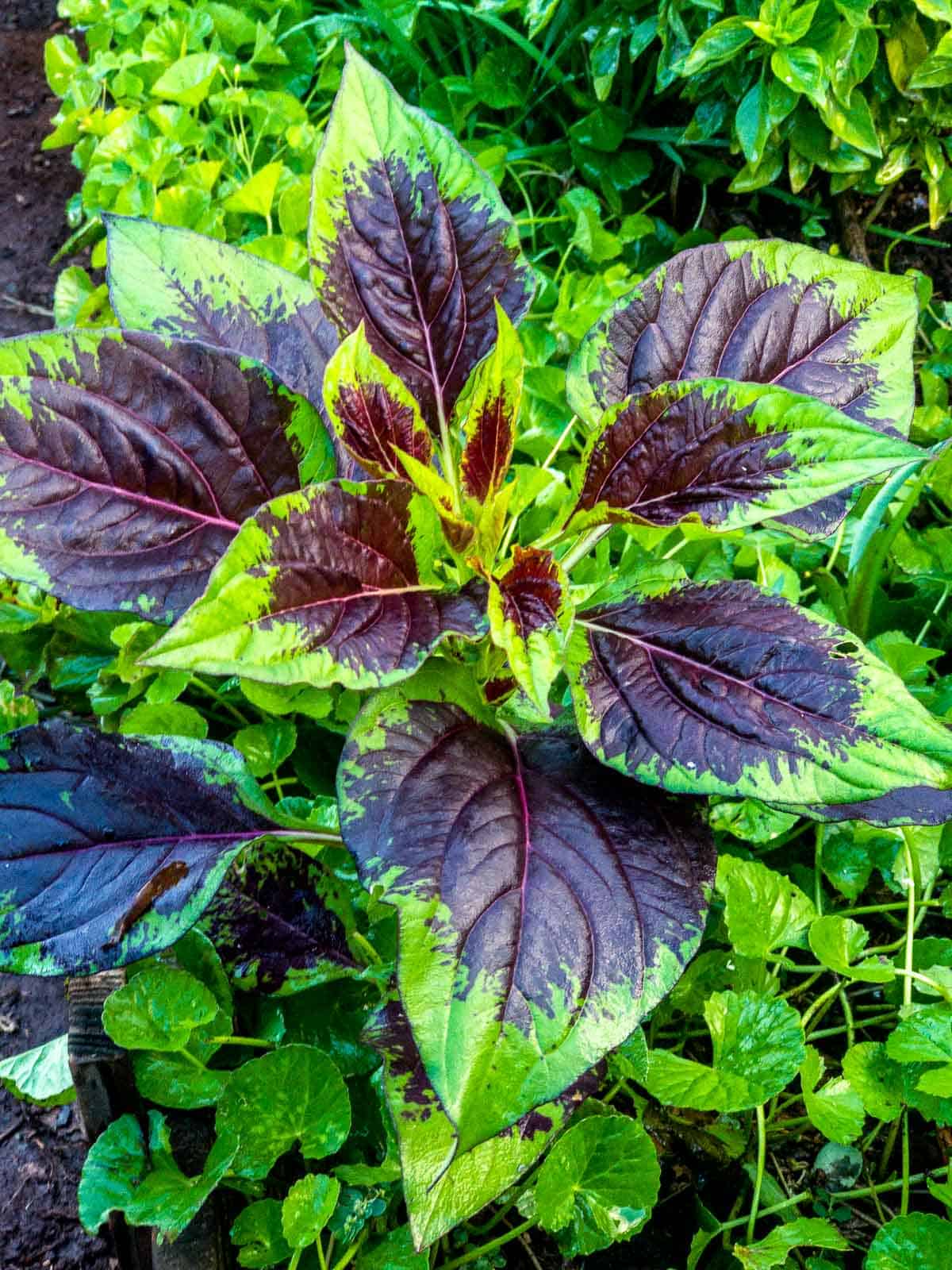
In fact, it's one of the most popular pot herbs eaten in Nigeria where it gets its common name from the city of Lagos.
Lagos spinach thrives in warm, moist soil and has been a tremendous friend in my garden. It provides shade for our gotu kola and tolerates less than ideal conditions when it is too hot or dry for other greens.
Jump to:
🌿 Botanical
- FAMILY: Amaranthaceae (Amaranth)
- GENUS: Celosia
- SPECIES: Celosia argentea
- TYPE: Annual Herb
- NATIVE: West Africa
- DISTRIBUTION: Pantropical
📋 Common names
- ENGLISH - Lagos spinach, Nigerian spinach, African spinach, quailgrass, feathered celosia, flamingo feather, wheatstraw celosia, silver cockscomb, lady's finger
- INTERNATIONAL - sokyokoto, efo soko, mfungu, qing xiang, crete de coq, cresta de gallo, mamoe, repe moa, lisi, kadayohan, no-geito
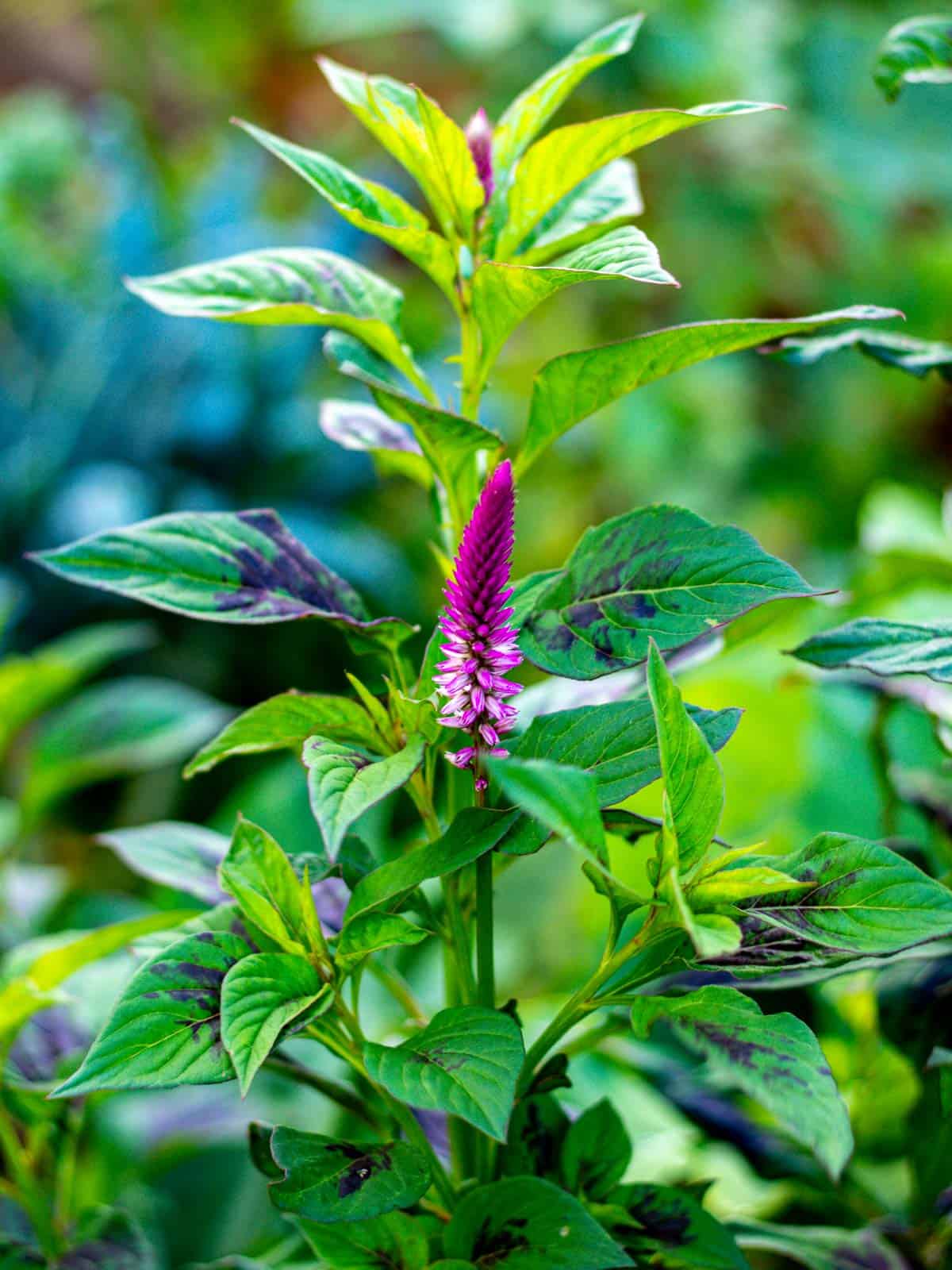
🔎 What does Lagos spinach look like?
I agree with those that call Lagos spinach one of the prettiest vegetables you can grow. Indeed, this herbaceous annual is flush with beautiful silver and fuchsia flower stalks when it matures at full height.
Even the leaves themselves are painted with beautiful maroon swatches in red varieties. This is the type that grows in my garden and graces our kitchen.
In other areas, the leaves of celosia argentea can be wide and pointed or elongated and torpedo-like depending on the cultivar and growing stage of the plant.

The leaves of these varieties can be a solid green color or mottled with deep red to purple hues. It's easy to see looking at the cultivars with speckled leaves why the Lagos plant is sometimes called purple amaranth.
🥕Nutrition
The funny thing is, most of my garden neighbors do think of our ubiquitous purple amaranth as a weed and are forever yanking it up and throwing it away.
Elsewhere in the world, Lagos spinach is highly valued for its edibility. It's even grown as commercial food in Nigeria.
Interestingly, Nigerian spinach has charming terms all over tropical Africa that tout its attributes.
You can find translations like "makes your husband fat and happy", "makes your husband's cheeks rosy", and "eaten by lazy ones."
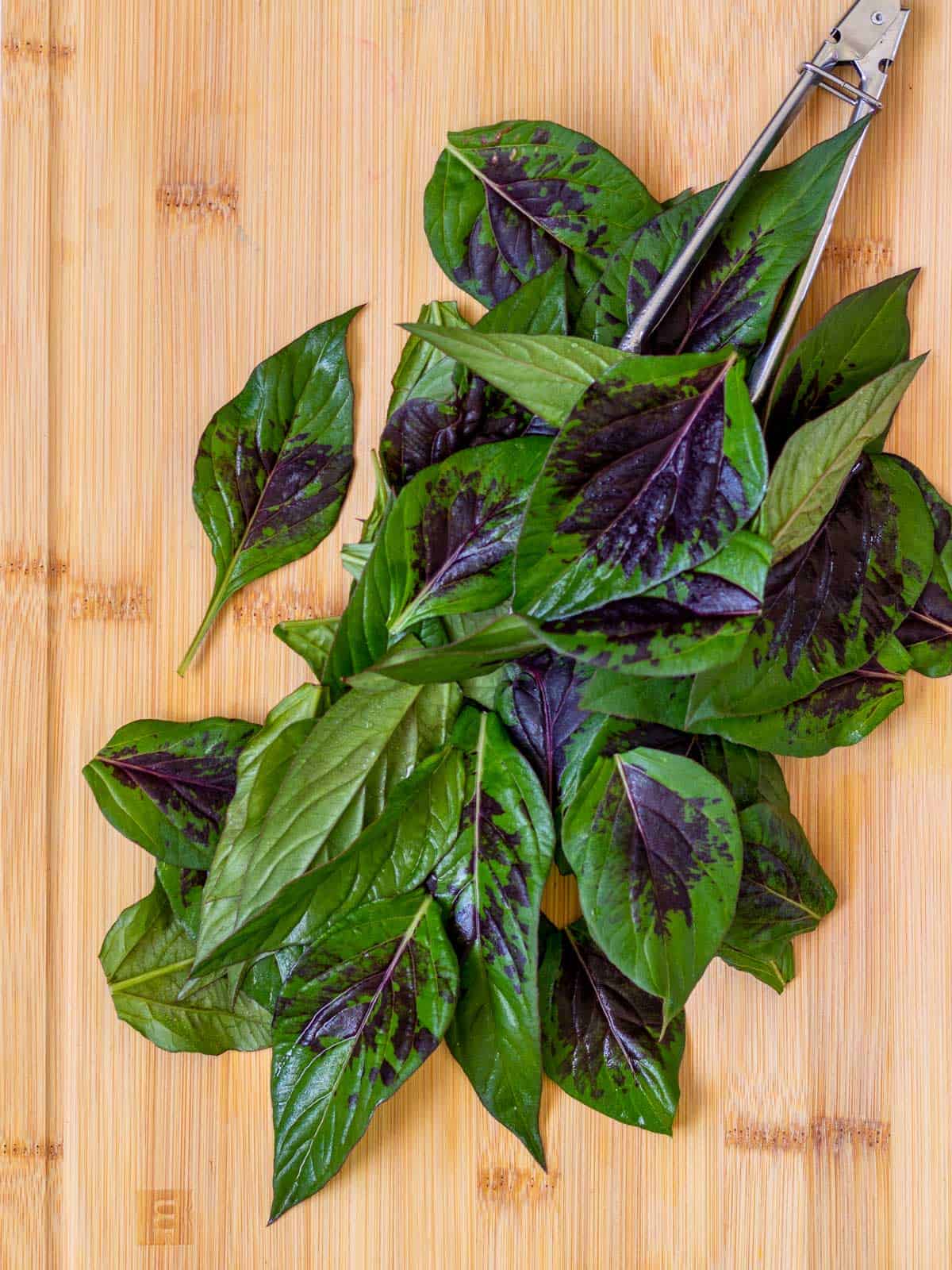
Well, nutritional data supports the folklore surrounding the health benefits of African spinach. It has significant amounts of vitamin A and C as well as protein. But even more, it outperforms other highly nutritious leafy greens.
Studies cited by ECHOCommunity.org rank celosia argentea as having up to ten times the iron of ordinary spinach and second only to moringa in antioxidants when compared to twenty indigenous leafy vegetables.
🪴Easy to grow
What do I love most about Lagos spinach? Well, for one thing, it seems to be entirely impervious to bugs.
I find that a considerable help in managing an organic plot. I have never seen any form of fungus, wilt, or bacterial disease on my celosia argentea.
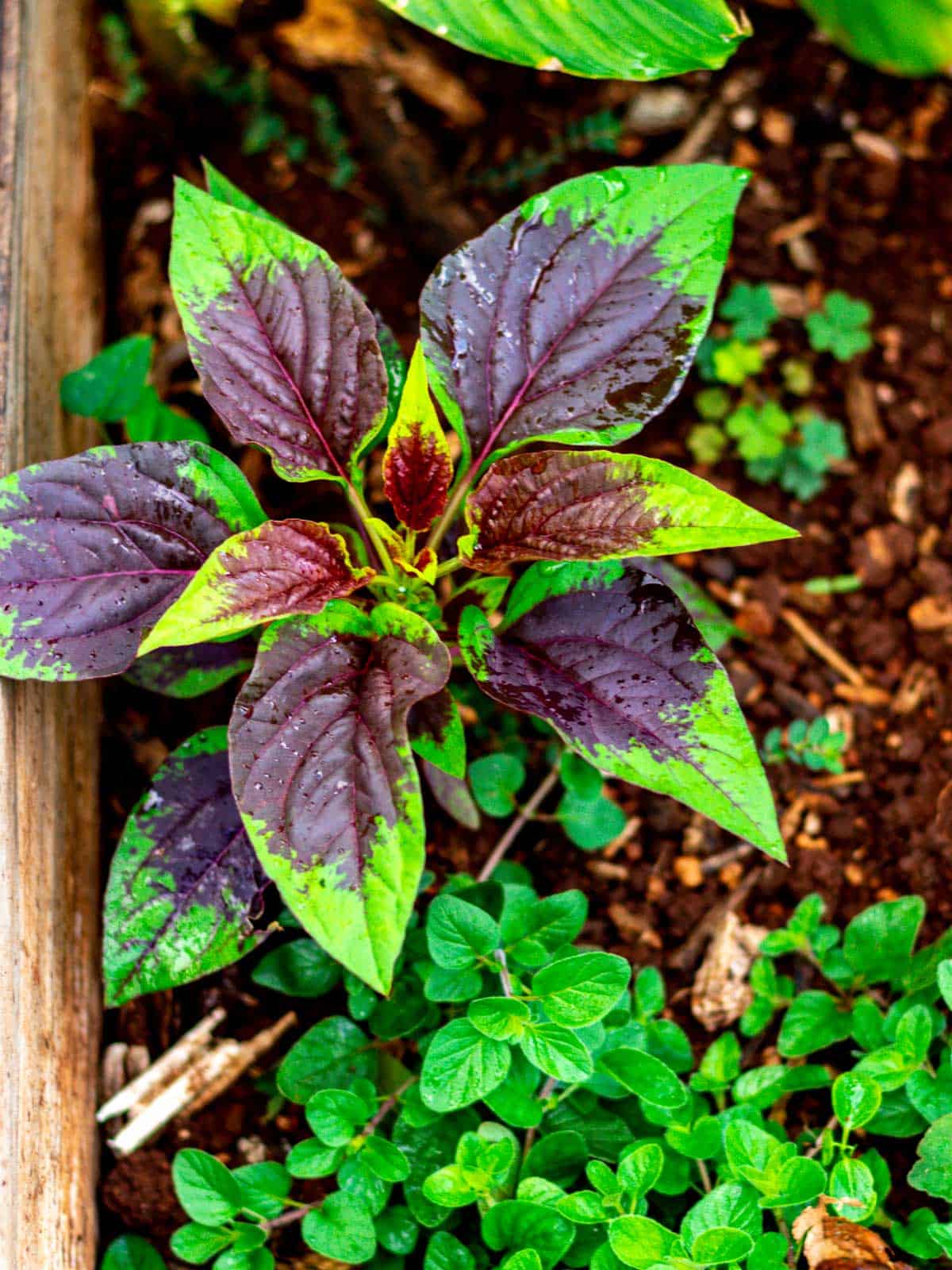
Here's a young plant that's just sprouted up growing happily amongst the oregano and turmeric in the garden.
Do you know what else is incredible? I have never planted it myself. Instead, I watched it pop up spontaneously in my community garden plot, a complete gift.
Since then, it continues to reseed all on its own, season after season. Thus, it's effortless to cultivate.
Even though it's classified as an annual and I grow it that way for its young and tender leaves, I think of it as perennial. It grows year-round without any seeding or planting on my part.
Well, now that I think about it, I have moved young plants from one part of the garden to another. It's not fussy and is tolerant of many growing conditions in the warm climate of Hawaii. Indeed, it will grow as high as six feet if left unchecked.
Not only does our wild spinach handle clay soil, but it even survives drought when our water supply is compromised.
It's true the leaves become smaller and more scraggly under such conditions. But, you can't believe how lush it grows with a little love and attention.
I always pick the greens when they are young and fat before the plant is prolific with flowers. Once the striking flowers mature, the leaves tend to thin and aren't as tender or succulent.
🌺 Flowers
The flowers of celosia argentea are showy and make gorgeous additions to flower bouquets.
The flowers can be cream, yellow, orange, red, pink, or purple and have different shapes depending on whether they belong to the cristata, plumosa, or spicata group.
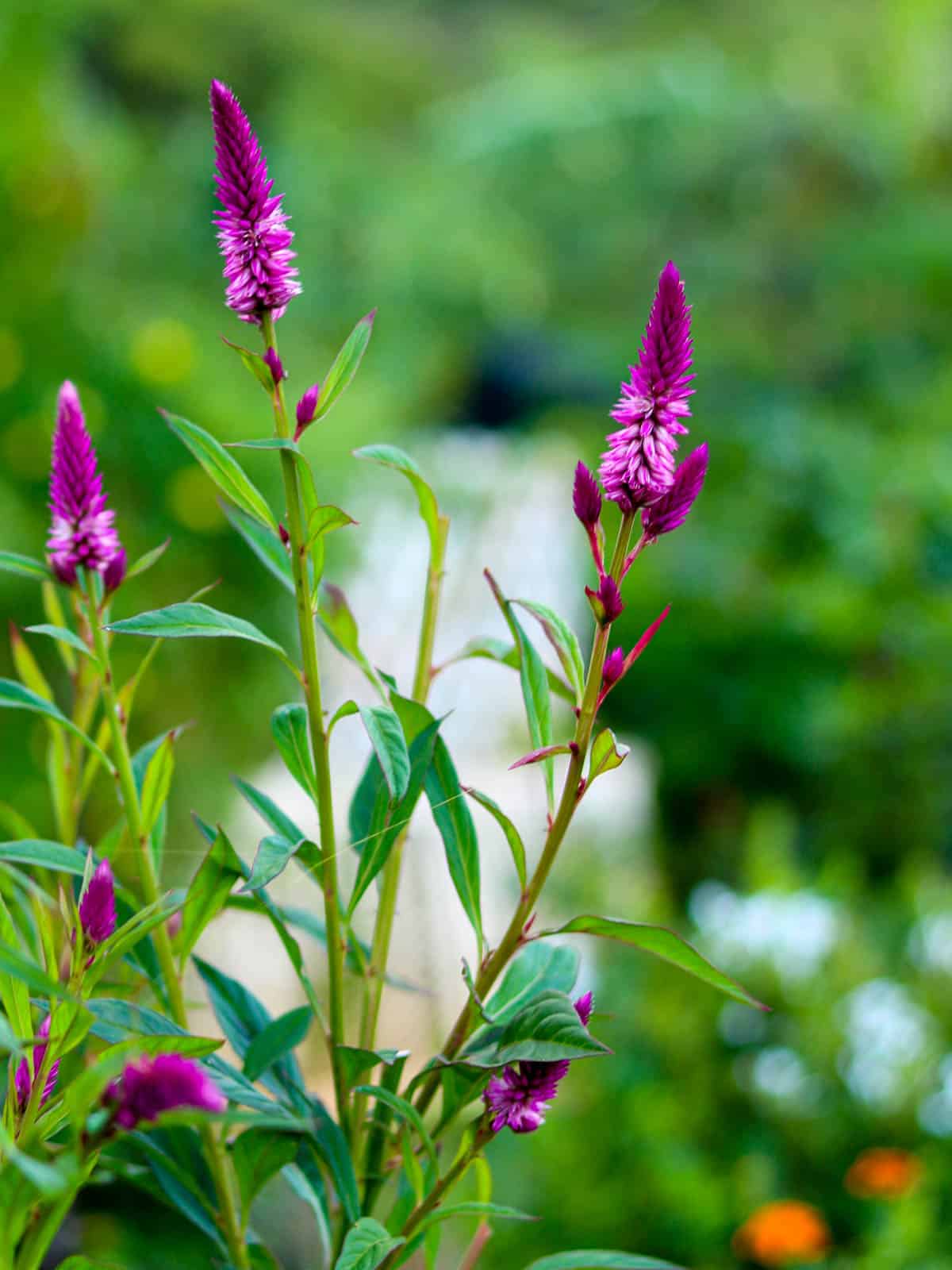
The ones shown here are from the spicata variety and the name argentea, which means silvery, aptly describes the velvety tips that develop at the top of the vivid magenta spikes.
Not only do the spiky flowers with their sturdy stems make beautiful fresh-cut arrangements, but they have a bonus attribute. Mature flowers can be air-dried and enjoyed as long-lasting blooms or in potpourri.
🫘 Seeds
The seeds of celosia argentea are technically edible like those of their other amaranth cousins. However, they are incredibly tiny. Thus, I don't bother to collect them to eat.
Further, as a gardener, I don't worry about harvesting my plants before seeds are produced. Fortunately, enough seed from the plants always makes it into the garden soil to start a new round of tasty spinach.
If you want to start your own Lagos spinach from seed, Sow Exotic sells the same variety of celosia argentea that grows like a weed here on Maui.
🍲 How to cook African spinach
So what's it like to use Lagos spinach in the kitchen? Well, it's just as easy to prepare as it is to grow. You can use it in any recipe that calls for cooked spinach.
However, in my opinion, it's heads above standard spinach in flavor and texture. Lovely Lagos is mild and doesn't have the bitter, metallic, or earthy flavor characteristic of some common varieties of spinach.
In addition, the bite is clean, with no trace of the slimness found in many other nutritious greens. The greens are especially soft and tender.
Like ordinary spinach, Nigerian spinach wilts instantly in a pot of boiling water and becomes delicate in minutes. The leftover pink-stained cooking water is almost too pretty to toss out.
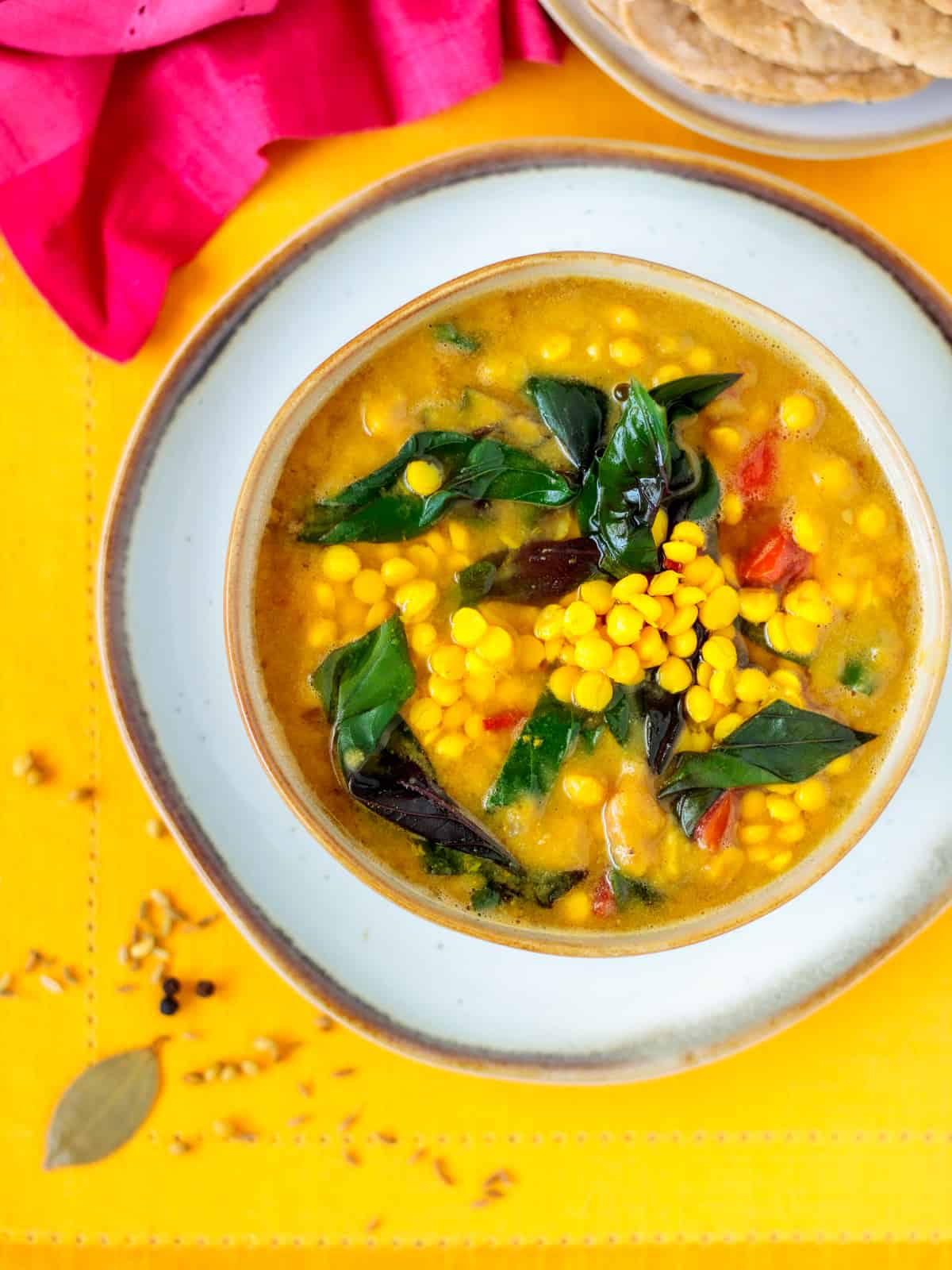
The number of ways to incorporate Lagos spinach in recipes is almost endless. If you want a starting place, Palak Chana Dal is one of my absolute favorite dishes.
Other ways to eat it include:
- Baked in spanakopita
- Sprinkled with gomasio
- As a pizza topping
- In pasta
- Simmered in curry
- Stir-fried with garlic
- Baked in casserole
- Added to Soup
- Mixed in a creamy dip
- On top of crostini
- As filling for crepes or quesadillas
👩🏼⚕️ Safety
You know that pink-stained cooking water I mentioned? There is good reason to discard it if you have a concern about foods high in oxalic acid.
Along with the list that includes chocolate, beans, swiss chard, beets, and nuts, Lagos spinach is a plant you want to limit if you have any kidney disease or health conditions.
Personally, I feel safe eating moderate cooked amounts of Lagos spinach without blanching it and throwing away the water. I trust you will let your own taste and judgment guide you.
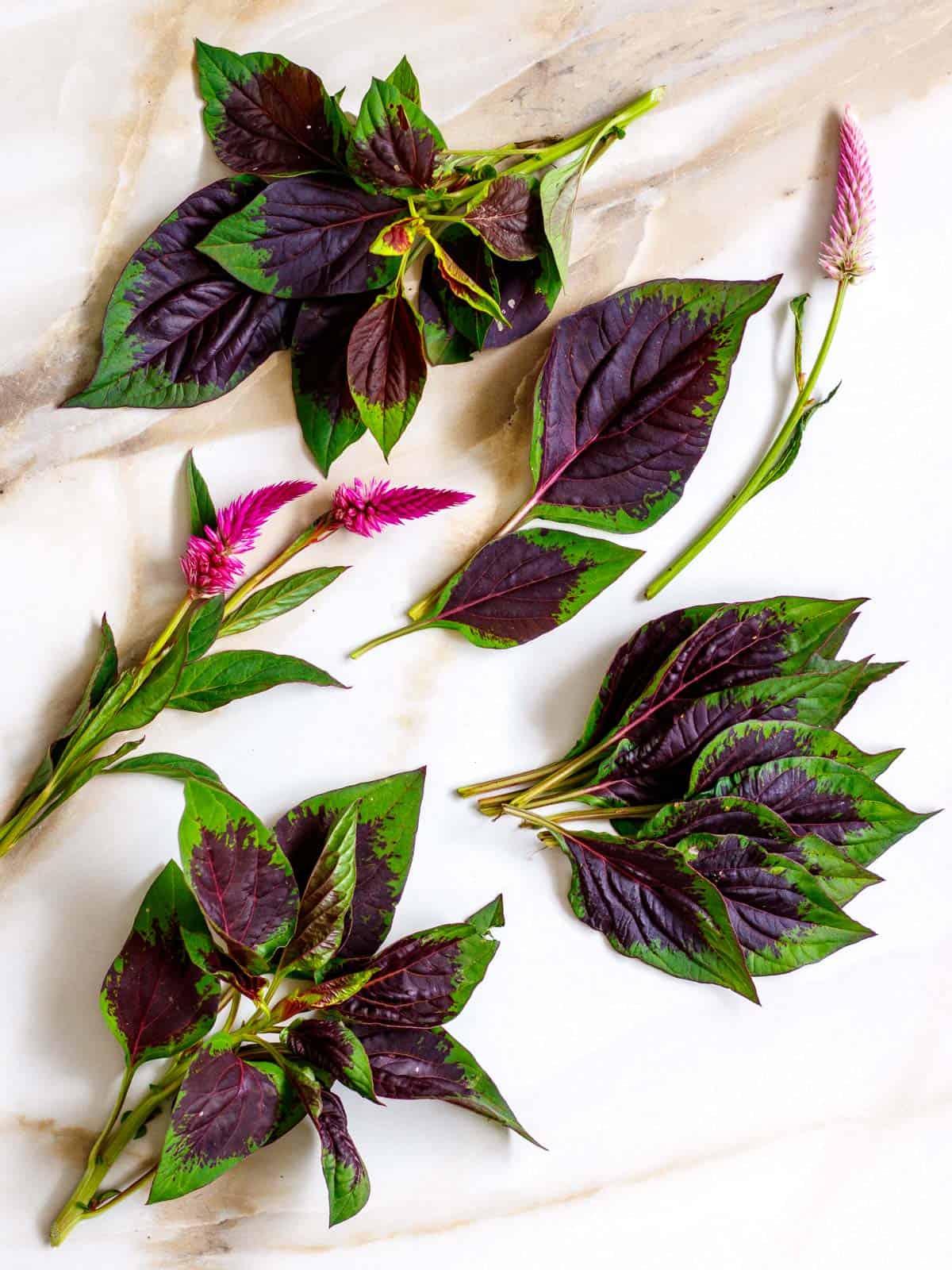
Whether you find celosia argentea growing wild in your own tropical climate or order seed to plant it, I encourage you to give this undervalued beauty a try.
If you have a husband whose cheeks grow fat and rosy, that will be a bonus!
💭 FAQ
No, spinach comes from the amaranth plant family and while it can be eaten raw, it is particularly well suited to cooking. Lettuce comes from the aster family and is most often eaten raw in salads and on sandwiches. Both types of leafy greens are especially nutritious when their color is darkest.
Lagos spinach tastes best cooked. It can be boiled, blanched, steamed, braised, and stir-fried. It cooks very quickly and can be used in a variety of recipes that call for regular spinach. Check out the list of ideas in this post. It freezes well after cooking and can be stored for up to 3 months.
🍃 More tropical greens
Always be one hundred percent sure of your plant identification if consuming foraged or wild plants. Finally, follow your doctor's advice when eating new or unfamiliar plants, especially if you are pregnant or taking any medications.
Enjoyed this post? Leave a comment, rate ⭐⭐⭐⭐⭐ it, and follow @poppyswildkitchen on Instagram. Aloha!







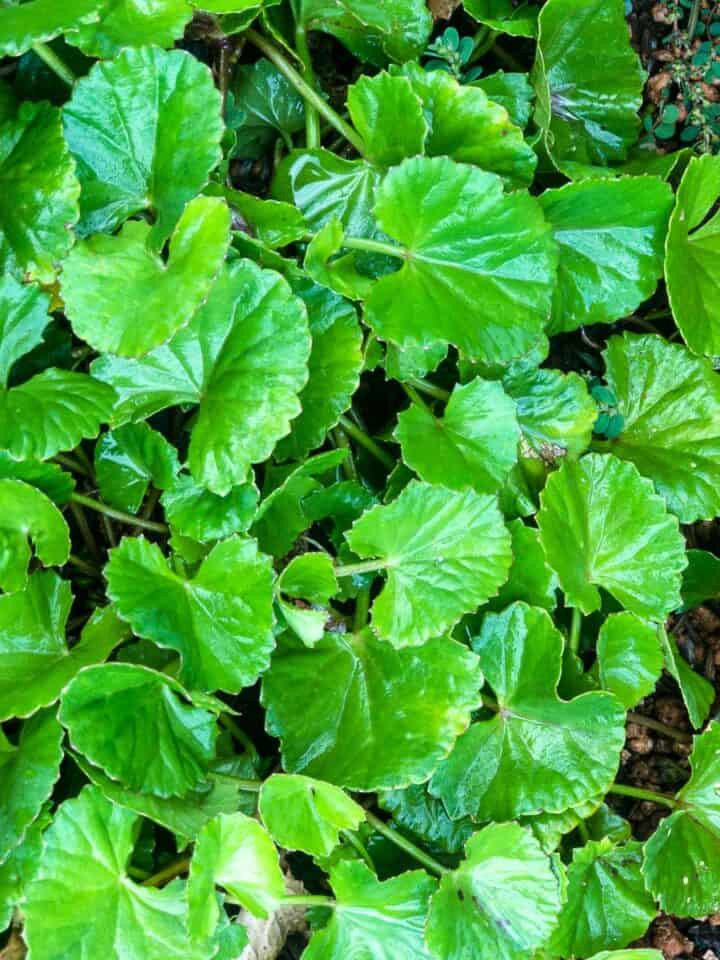
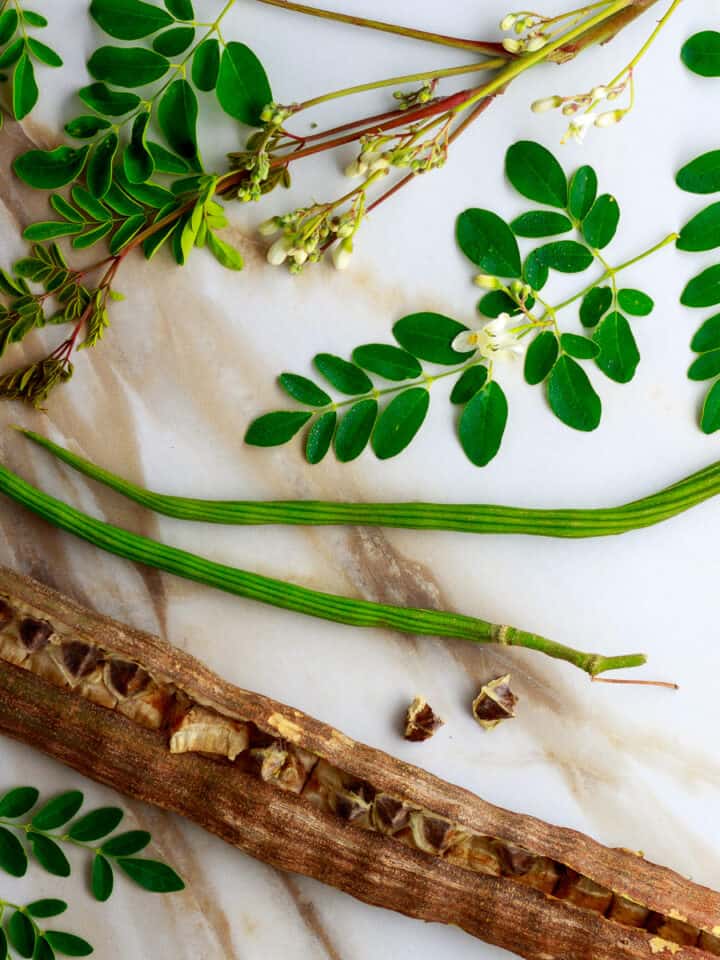
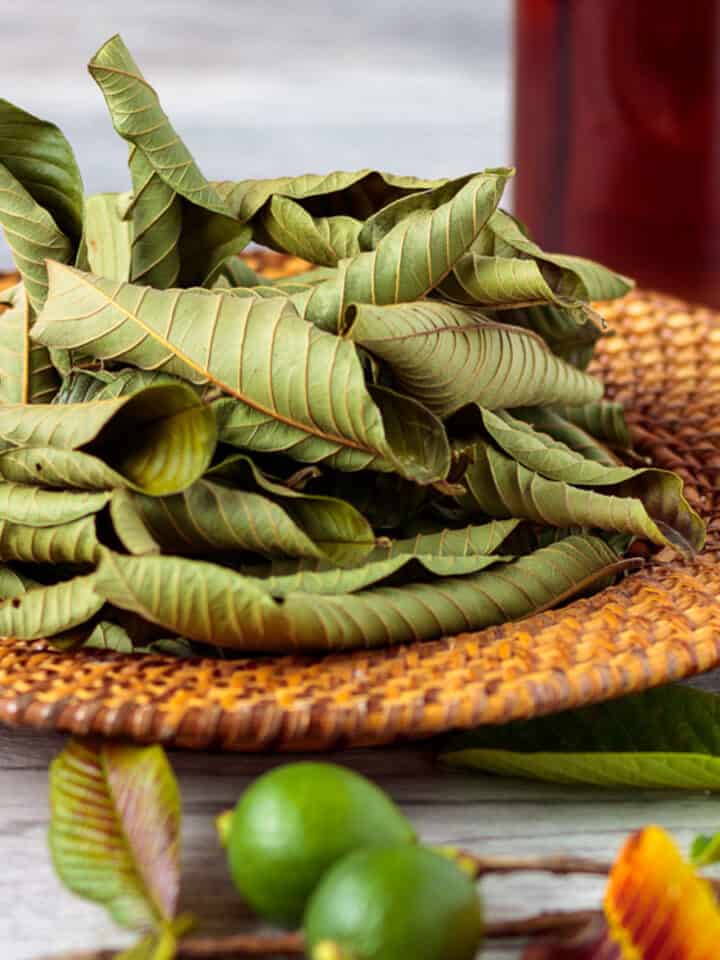
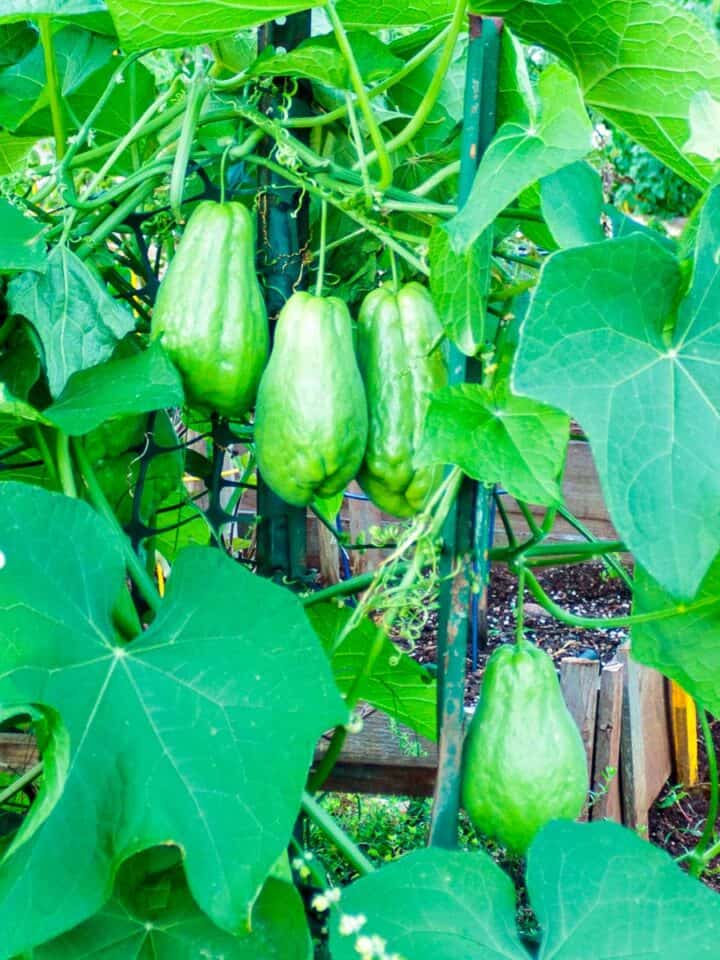
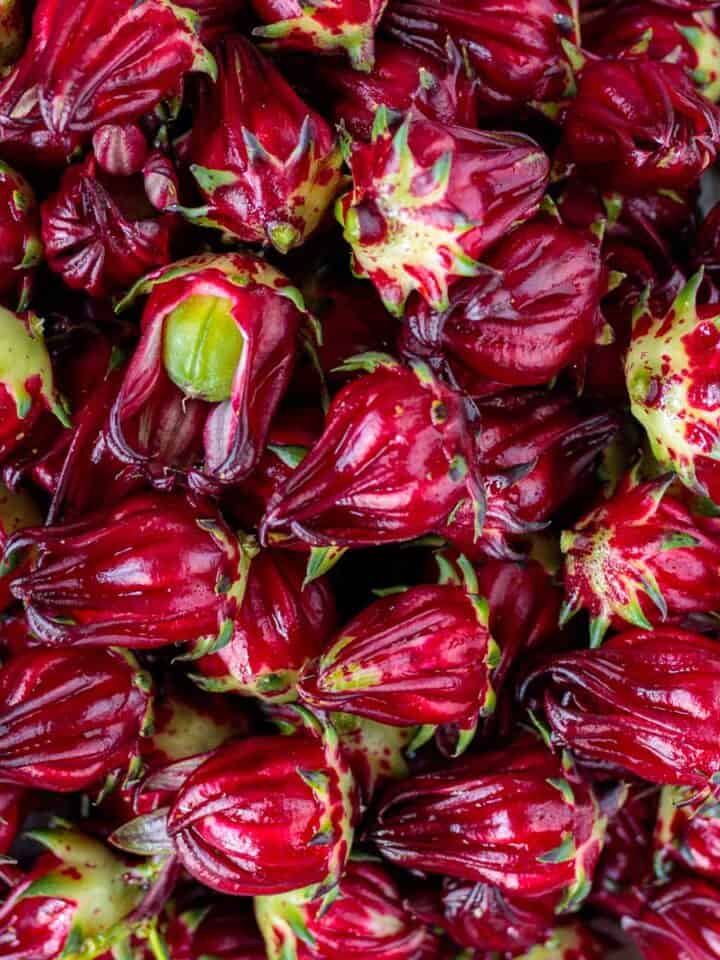
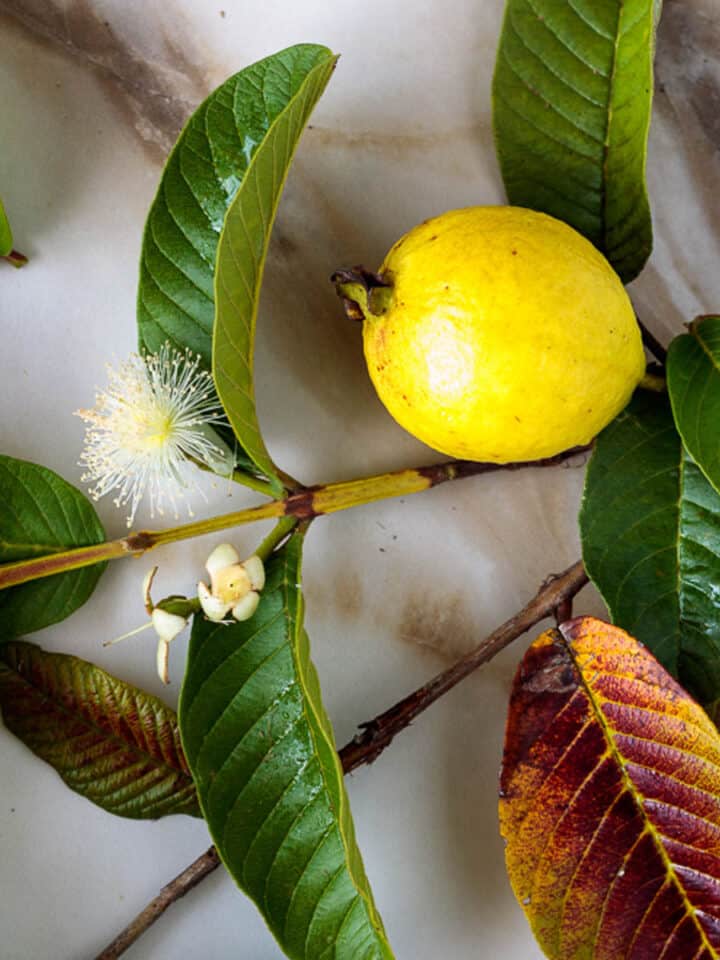
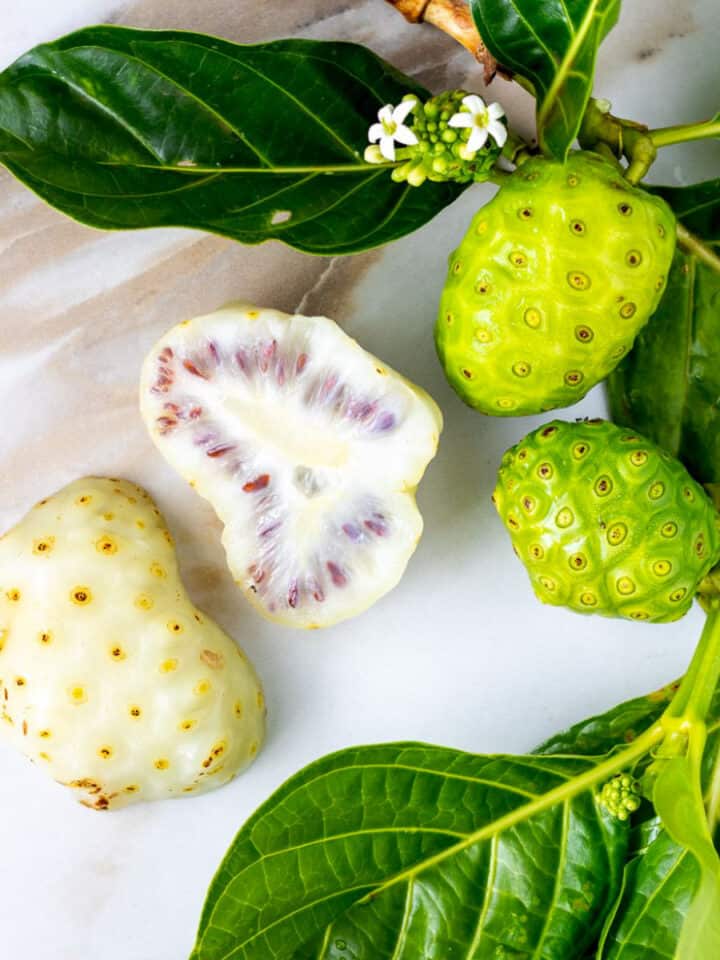
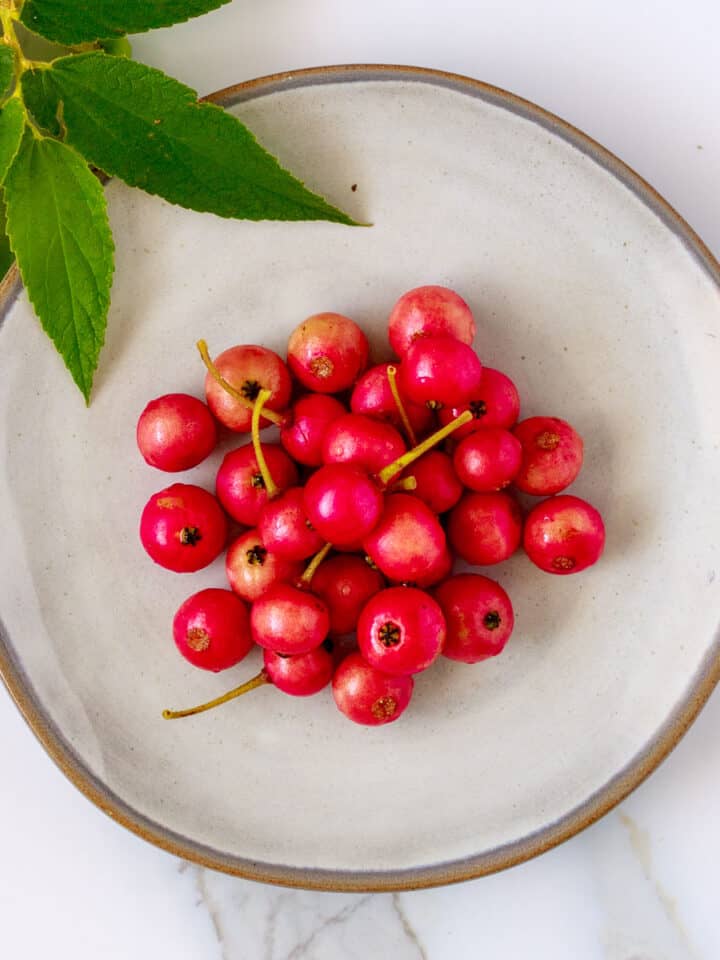
Heidi
When to plant please? Couldn't find this in your description, unless I'm missing something.
Poppy Hudson
Lagos spinach can be planted year round in warm climates and zones 10-11. Plant seed after all danger of frost has passed in colder climates. It thrives in rich, moist soil and is harvestable by topping in 4-6 weeks. Thereafter, it makes a cut and come again crop providing continual harvests. It will reseed on it's own in the right climates and thus performs as a perennial. On Maui, it tolerates some drought and summer heat, but produces the lushest leaves in springtime and locations with a little shade. Here's a link with more growing information you might find useful at Sow True Seed. Happy sowing!